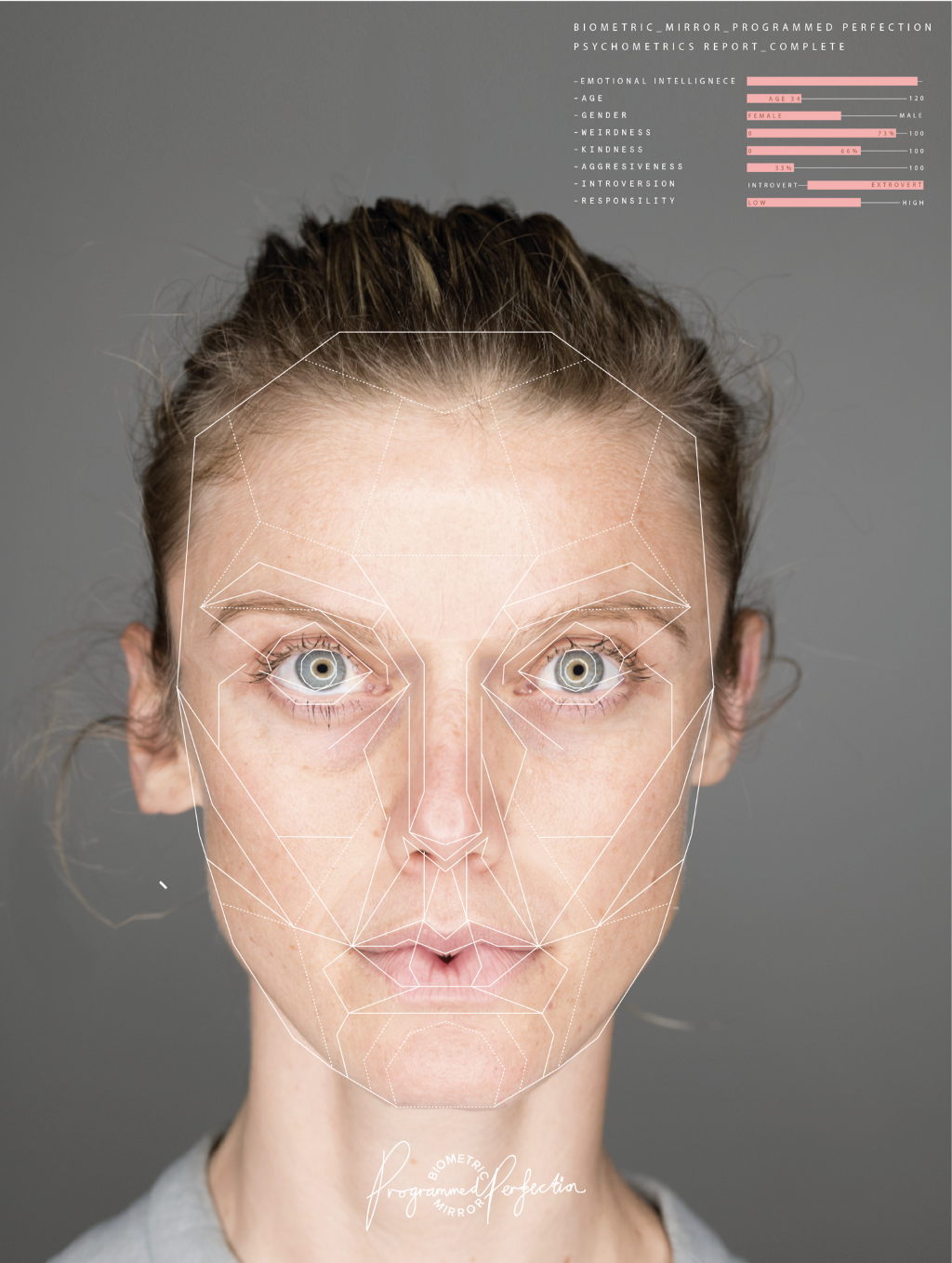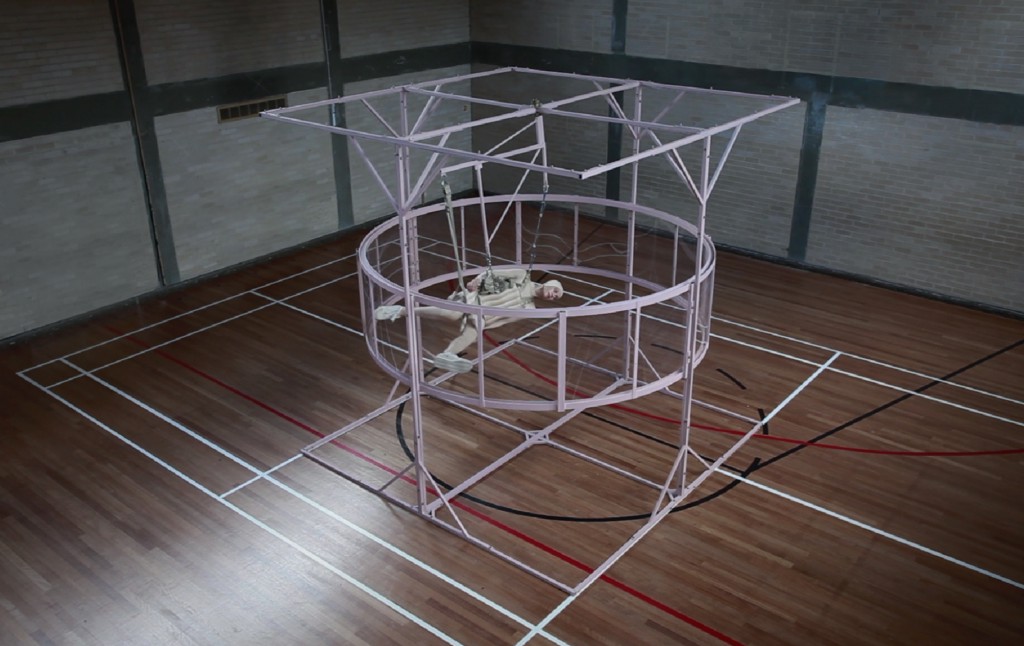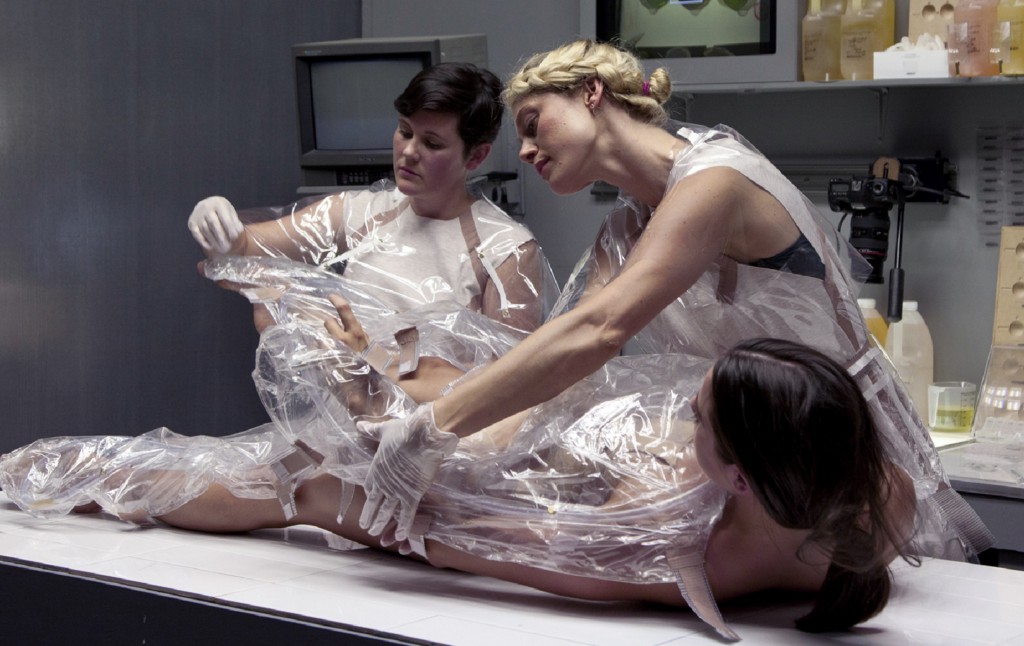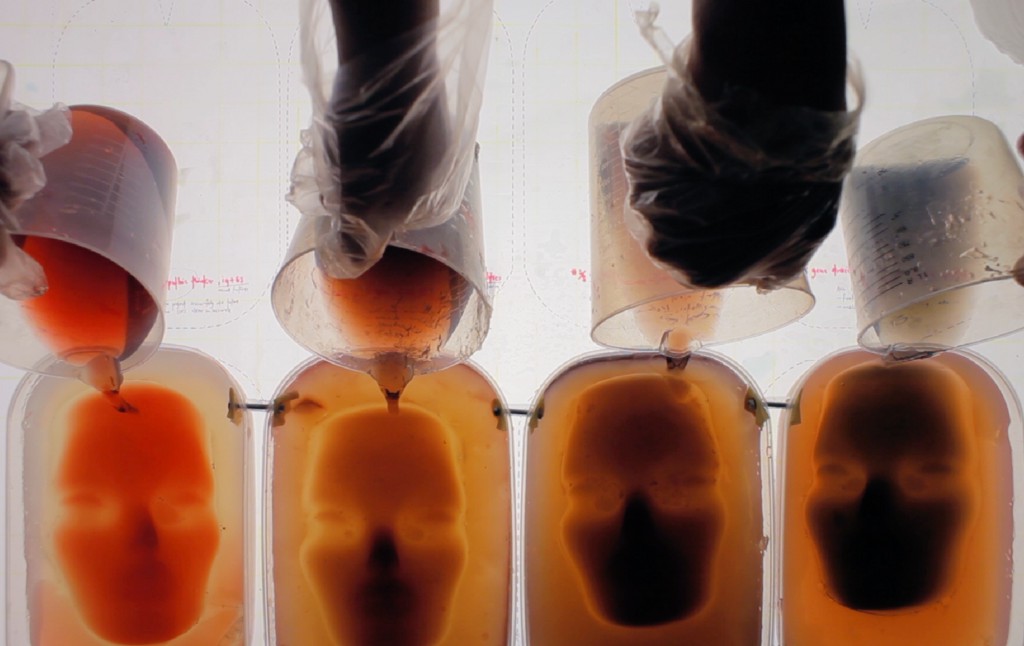Lucy McRae calls herself a “body architect.” She produces short films and live experiences that push audience members to reimagine their sense of self. It’s all about “exploring the slipperiness of where science and technology meets the body,” she says. In her latest work, which opened this week in Melbourne, Australia, an installation called Biometric Mirror challenges the accuracy and assumptions of facial recognition algorithms.
McRae, who is 39 and was born in London, was formally trained in ballet, architecture, and interior design, and had a stint leading the far-future research lab at Philips Design. I asked her about the purpose of making art about biotechnologies. Is it a way to communicate the results of science—to reveal its impacts? Or can art play a part in the discovery process itself and shape the way science is done?

“The work I do is to create a platform to discuss science and technology, who we are, and where we’re headed. Sometimes it’s not actually the physical outcome that matters: the experience is an opportunity to ask questions and to provoke.
“The idea is to have a commentary on how we don’t want a world that’s perfect, because if we do—and we’re headed towards that world—we’re all going to look the same. I’ve been talking to a doctor friend of mine, and we’ve been discussing the cognitive and neurological relationship between perfection and happiness. Once you get to this top of the mountain, as it were, after you wind down from the high, you become disappointed because the challenge is over. I think that’s a really interesting exploration into what we’re feeding artificial intelligence. Can we incorporate accident, imperfection, and serendipity into machine learning? And if we don’t, what do we get?”
“[My inspiration] can be totally random. For example, I was just at a conference in Tel Aviv for four days, and went to Jerusalem for the day. I was just blown away and transported by the kind of storytelling and coexistence of these big mythologies. And that made me realize how important speculative design and narratives are in telling, and explaining, future scenarios. The Future Day Spa idea came to me when I was interested in the concept of the body beyond Earth’s edge. I met an economist from NASA who told me that they were concerned with the complications of growing a fetus in zero gravity, and that was it: That became my brief for the next two years.
“I get a lot of inspiration from meeting people who are very different to me. I like being uncomfortable, and being the anomaly amongst a group of people, because I feel like I learn so much more. I’m much more provoked.”

“I’m not scared of technology. The types of people I come into contact with, and the kinds of research I’m included in, give me a great, positive outlook. And if I’m scared or if I’m negative, then I’m not really helping progress in any way.
“My work is commenting or responding to signals that I pick up, exploring the ideologies and ethics around technology, and just offering more questions. I’m not suggesting I have the answers. Actually, whether I’m negative or positive isn’t an important aspect of what I do.
“Maybe it’s more important to be asking the right questions.”

“When you bring an artist, a biologist, and a technologist together, communication happens in a different way. So, if artists can get in early to the scientific or innovation process, then the future of science — the vision of science — won’t be monopolized by scientists. You need design or art or narrative or fiction to be able to communicate that idea, for it to be accessible, so it can bridge the fringes of culture and become more diverse.
“What I encourage is for us to have a vast openness around science, for it to become interdisciplinary rather than being kept behind the lab doors of scientists. I think that’s one of the roles that’s going on in the art and design world: opening up these gateways to science and questioning the ethics of its outcome.”
“I don’t have a ‘too far’ limit. The work I do is about blurring boundaries, and I have a healthy disregard for any kind of traditional labels or limitations. I’m actually interested in concepts that may be too far. Beaming a ray of light into the brain, one that is able to refashion chunks of our experience by triggering pleasure and erasing memory — I would assume a lot of people think that’s ‘too far.’ But I’m very interested in that technology — optogenetics.”

“This idea about businesses or biologists operating more like an art studio: If you could do that, then you bring about more chaos, more serendipity, and epiphany to designing innovation — and you have no idea what you’re going to get. I think we are at a point now where we need to design from a place of being vulnerable and not knowing — being open to epiphany and being okay with ending up in a place where you didn’t want to start. The problem some people have with that is they need to know from the beginning where they’re going to end, how long it’s going to take to get there, what’s it going to look like. If you’re willing to jump on an artistic process, we can’t you promise you specific outcomes, but we can promise you that it’ll be way grander, way greater, way more provocative.”
















